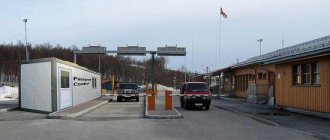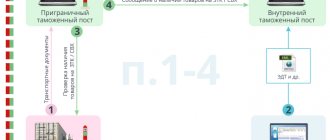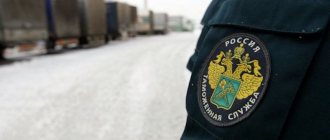The Law “On Customs Tariffs” has been amended
Understood the terminology
In the law that is currently in force, a customs duty is a mandatory contribution when importing or exporting goods (Clause 5, Article 5 of the Law of May 21, 1993 No. 5003-1). The Customs Code defines duty as a mandatory payment (clause 1, article 318). From July 1, 2006, both under the Law “On Customs Tariffs” and under the Customs Code, “customs duty” is a payment. This amendment is purely theoretical, and it will not affect the work of customs and companies in any way.
Another change is associated with the concept of customs duty. Now there are duties for the import of goods, duties for the export (Clause 5 of Article 5 of the Law of May 21, 1993 No. 5003-1). Seasonal duties (Article 6 of Section II) and special duties (Article 7 of Section II) are described separately. Special types include special, anti-dumping and countervailing duties.
From July 1, 2006, the division will be simpler: into customs and special duties. And the concept of seasonal will simply be included in customs duties.
Now a number of basic terms, the understanding of which is necessary in order to correctly determine the customs value of goods, are scattered across different articles. They are found in Article 20 “Transaction price method with identical goods”, and in Article 21 “Transaction price method with similar goods”, and in Article 22 “Method based on subtraction of cost”. We are talking about determining which goods are called identical, which are homogeneous, and which are goods of the same class. In the new edition, all terms are explained in one place. This is Article 5, which will be called: “Basic concepts used in this Law.”
The term “generally accepted accounting principles” does not appear at all in the current edition. In the updated law, this concept will be used when determining customs value using the method of subtraction (Article 22) or addition (Article 23). Therefore, this term is explained in the new edition.
All of these concepts comply with international trade terminology and meet the requirements of the World Trade Organization. The need for such clarifications is due to the fact that “the convergence of Russian legislation on customs valuation of imported goods with the norms of the Agreement on the Application of Article VII of the GATT of 1994 is one of the central issues in the negotiations on Russia’s accession to the WTO” (from the explanatory note to the draft Law “On the Introduction amendments to the Law “On Customs Tariffs”).
Removed unnecessary articles
From July 1, 2006, the Law “On Customs Tariffs” will no longer contain articles on special (Article 8), anti-dumping (Article 9), countervailing (Article 10) duties and the procedure for their application (Article 11). This is also just a technical correction. The fact is that in 1993, when the Law “On Customs Tariffs” was adopted, there was no legislation regarding these types of duties. Subsequently, Law No. 165-FZ of December 8, 2003 “On special protective, anti-dumping and countervailing measures for the import of goods” was adopted. Therefore, the need to duplicate the information contained in it in the Law “On Customs Tariffs” automatically disappeared.
Section V “Determination of the country of origin of goods” also turned out to be unnecessary. It was actually repeated in the Customs Code adopted in 2003. And all issues related to determining the country of origin for goods that move across the customs border are now resolved according to the Customs Code (Section 1, Chapter 6 of the Labor Code).
The articles on the rights and obligations of declarants and customs officers (Articles 15, 16) will lose their force from July 1, 2006. The provisions of these articles duplicate Article 323 of the Customs Code.
Article 17 “Calculation, payment and collection of duties” indicates that the duty must be calculated and paid according to the Customs Code. This article was also removed from the new version of the law.
The text of Article 18 “Methods for determining customs value” simply moved to Article 12 “Basic principles for determining the customs value of goods.” This combination makes the content of the law more logical.
New restrictions have been introduced
Legislators clarified how firms should calculate the “transaction value” (Article 19 of Law No. 5003-1 of May 21, 1993) in order to use the first method (method based on the transaction value of imported goods) for calculating customs value. And it is most beneficial for participants in foreign economic transactions, since it takes into account real prices.
Now the cost of imported goods is determined by firms based on the price that they actually paid or must pay for the goods when selling them for export to the Russian Federation. Declarants also include in the price various components that are listed in Article 19. For example, these are the costs of paying remuneration to the intermediary, containers and packaging, costs of loading, unloading and reloading, etc.
In the new version of the Law “On Customs Tariffs”, all these additions will be separated into a separate article 19.1 “Additional charges to the price”.
Moreover, legislators are introducing a new restriction on the use of the first method. If the declarant does not have “documented and quantifiable” information about additional expenses, then the “transaction value” method cannot be applied (clause 12 of Article 1 of Law No. 144-FZ of November 8, 2005).
New opportunities have appeared
Now it is especially difficult for importers to prove to customs that the transaction price was not affected by the interdependence of the parties. That is, the parties to the transaction are not bound, for example, by labor, business or family relations. The declarants themselves must prove the absence of dependence (subparagraph g, paragraph 2, article 19 of the Law of May 21, 1993 No. 5003-1).
Since July 1, 2006, the situation has changed. “The fact of the relationship between the seller and the buyer should not in itself be a basis for declaring the value of the transaction unacceptable for determining the customs value of goods” (clause 11 of Article 1 of the Law of November 8, 2005 No. 144-FZ).
Customs officers will have to independently detect the impact on the price of goods of the relationship between partners in a foreign trade transaction. Then inform the declarant about this in writing. And he already has the right to justify the absence of such influence. The importer may use “test values” for evidence. The new version of the law calls verification values, for example, prices that were in similar contracts between independent partners (clause 11 of article 1 of the Law of November 8, 2005 No. 144-FZ).
An important innovation concerns importers-distributors. According to the new version of Article 5 of the Law “On Customs Tariffs”, the fact that a company is the only distributor or agent does not yet prove interdependence. This opens up the opportunity for single distributors to use the first and most profitable method of determining the customs value of goods.
The full text of the documents used can be found in SPS ConsultantPlus.
L. Izotova
About the Russian tariff
The main functions of any customs tariff can be called fiscal and protectionist. The purpose of the latter is to protect the national commodity producer. Its mechanism is simple: imported goods subject to customs duties automatically increase in price during the process of sale on the market of the importing country. Thanks to this, the competitiveness of domestic goods for similar purposes increases.
The task of the fiscal function of the tariff is to ensure the receipt of payments received from the collection of customs duties into the revenue side of the state treasury.
The main goals proclaimed by the law “On Customs Tariffs” are as follows:
- Rationalize the structure of import of goods into the country.
- Ensure a rational ratio of the volume of import and export of goods, a balance of income and expenses in foreign currency on the territory of the Russian Federation.
- Create the conditions necessary for positive dynamics in the development of consumption and production of goods in the country.
- Protect the national economy from foreign competitors.
- To provide conditions for the effective integration of our country into the world economy.
On amendments to Article 35 of the Law of the Russian Federation
Adopted by the State Duma on February 5, 2021
Approved by the Federation Council
February 12, 2021
Article 1
Introduce into subparagraph 7 of paragraph 1 of Article 35 of the Law of the Russian Federation of May 21, 1993 N 5003-I “On the Customs Tariff” (Gazette of the Congress of People's Deputies of the Russian Federation and the Supreme Council of the Russian Federation, 1993, N 23, Art. 821; Collection of Legislation of the Russian Federation Federation, 1995, N 32, Art. 3204; N 48, Art. 4567; 1996, N 1, Art. 4; 1997, N 6, Art. 709; 1999, N 7, Art. 879; N 18, Art.
2221; 2000, N 22, art. 2263; 2002, N 30, art. 3033; 2003, N 23, art. 2174; N 28, art. 2893; 2004, N 35, art. 3607; 2005, N 52, art. 5581; 2006, N 47, art. 4819; 2007, N 49, art. 6071; 2008, N 49, art. 5748; 2009, N 1, art. 22; N 26, art. 3123; 2011, N 50, art. 7351; 2013, N 40, art. 5038; 2014, N 48, art. 6647; 2015, N 48, art. 6690; 2021, N 30, art. 4536; 2021, N 18, art.
2196) amendment, stating it as follows:
“7) the following goods received (produced) during the implementation by organizations that meet the requirements established by paragraph 1 of Article 333_43 of the Tax Code of the Russian Federation, activities for the extraction of hydrocarbons at a subsoil site: crude oil (including oil and gas condensate mixture obtained due to technological features of transportation of crude oil and stable gas condensate by pipeline transport), exported from the Russian Federation by the specified organizations, subject to submission to the customs authority of the confirmation specified in paragraph three of paragraph 1_3 of this article, or by other persons, subject to submission to the customs authority of the confirmation specified in paragraph three of paragraph 1_3 of this article article and paragraph four of this subclause (hereinafter referred to as confirmation). The goods specified in this subparagraph are exempt from export customs duties if, in relation to the subsoil area on which the corresponding goods are received (produced) as a result of hydrocarbon extraction activities, during the entire month in which such goods are exported from the Russian Federation goods, the following conditions are simultaneously met:
in relation to additional income from the production of hydrocarbon raw materials in such a subsoil plot, the tax on additional income from the production of hydrocarbon raw materials is calculated on the grounds specified in subparagraph 1 or 2 of paragraph 1 of Article 333_45 of the Tax Code of the Russian Federation;
When calculating the mineral extraction tax in relation to oil extracted from such a subsoil plot, a coefficient is applied, determined in the manner established by Article 342_6 of the Tax Code of the Russian Federation, in an amount of less than 1.
In relation to the goods specified in this subparagraph, exported by other persons and declared in accordance with full declarations for goods, confirmation of an organization that meets the requirements established by paragraph 1 of Article 333_43 of the Tax Code of the Russian Federation on the implementation in relation to the subsoil plot on which, as a result of activities for the extraction of hydrocarbon raw materials, the specified goods exported from the Russian Federation are received (produced), the conditions established by paragraphs two and three of this subclause are submitted in the form of an electronic document (electronic confirmation) simultaneously with the submission of a full declaration for the goods.
The electronic confirmation must contain information about the organization that meets the requirements established by paragraph 1 of Article 333_43 of the Tax Code of the Russian Federation, as well as the name of the person to whom the confirmation is provided, the name of the subsoil area where the goods were received (produced), the number of goods received (produced) and transferred goods. The format and structure of the electronic confirmation are approved by the federal executive body exercising control and supervision functions in the field of customs;.”
Article 2
1. This Federal Law comes into force on the date of its official publication.
2. The provisions of subparagraph 7 of paragraph 1 of Article 35 of the Law of the Russian Federation of May 21, 1993 N 5003-I “On Customs Tariffs” (as amended by this Federal Law) apply to legal relations that arose from May 1, 2021.
3.
The goods that are specified in subparagraph 7 of paragraph 1 of Article 35 of the Law of the Russian Federation of May 21, 1993 N 5003-I “On Customs Tariffs” (as amended by this Federal Law) were exported from the Russian Federation by other persons and in respect of which a complete declaration for goods in accordance with Article 102 or 204 of the Federal Law of August 3, 2021 N 289-FZ “On customs regulation in the Russian Federation and on amendments to certain legislative acts of the Russian Federation” was filed after May 1, 2021 and before the date of entry into force of this Federal law, are exempt from paying export customs duties subject to the submission to the customs authority in any form on paper of confirmation of compliance with respect to the subsoil plot on which, as a result of hydrocarbon extraction activities, the specified goods were received (produced) of the conditions established by paragraphs two and the third of subparagraph 7 of paragraph 1 of Article 35 of the Law of the Russian Federation of May 21, 1993 N 5003-I “On Customs Tariffs” (as amended by this Federal Law), containing the information specified in paragraph five of subparagraph 7 of paragraph 1 of Article 35 of the Law of the Russian Federation of 21 May 1993 N 5003-I “On Customs Tariffs” (as amended by this Federal Law).
4.
Confirmation in the form specified in part 3 of this article in relation to the goods that are specified in subparagraph 7 of paragraph 1 of Article 35 of the Law of the Russian Federation of May 21, 1993 N 5003-I “On Customs Tariffs” (as amended by this Federal Law), exported from the Russian Federation by other persons and declared in accordance with complete declarations for goods submitted after May 1, 2021 and before the entry into force of this Federal Law, shall be submitted within one month from the date of entry into force of this Federal Law.
5.
Refund (offset) of the amounts of export customs duties and penalties paid (collected) in relation to goods that are specified in subparagraph 7 of paragraph 1 of Article 35 of the Law of the Russian Federation of May 21, 1993 N 5003-I “On Customs Tariffs” and a complete declaration for which was filed after May 1, 2021 and before the expiration of one hundred eighty days from the date of entry into force of this Federal Law, is carried out in the manner established by the legislation of the Russian Federation on customs regulation, without paying interest.
President of Russian Federation
V.Putin
Moscow, Kremlin February 18, 2021 N 24-FZ
The electronic text of the document was prepared by Kodeks JSC and verified against:
Official Internet portal of legal information www.pravo.gov.ru, 02.18.2021,
N 0001202102180041
Source: https://docs2.kodeks.ru/document/564287982
Law
The main theses of the Federal Law on Customs Tariffs:
- Regulations and justification for the application of rates;
- Procedure for calculating tariffs;
- Drawing up a list of goods on which duties are levied;
- Peculiarities of imposing duties on imported goods depending on the country of origin;
- The procedure for allocating tariff benefits, privileges, and quotas.
- R. 1 (Articles 1 – 5) – the main objectives of the law, the process of setting tariffs, etc.;
- R. 2 (Articles 6 – 11) – explanations on seasonal and specific duties;
- R. 3 (Articles 12 – 17) – description of the value of goods determined for the calculation of customs duties as the tax base;
- Sections 4 and 5 are no longer relevant;
- R. 6 (Articles 34 – 37) – provisions on tariff preferences;
- R. 7 (Article 38) – final aspects.
Classification of duties according to the law:
- Ad valorem - a tariff that is levied as a percentage of the customs value of the goods, regardless of its type and type;
- Specific - here, to calculate the duty rate, not a percentage of the price of the product is taken, but a fixed rate per unit in a mathematical definition (ton, kilogram, etc.);
- Combined tariff - combines the two previous ones.
More about the concept
The customs tariff of the Russian Federation is understood as a set of all rates of customs duties that apply to goods transported across the border of the Russian Federation. All information contained in it is systematized according to the commodity nomenclature of foreign economic activity (TN FEA).
At their core, customs duties refer to indirect taxes that the state levies on goods crossing the customs national border. According to their fiscal function, customs duties serve as one of the sources of the state budget.
Other valuation methods
- Cost subtraction method. It is used when a similar or identical product being valued is to be sold on the territory of the Russian Federation without changing its initial state. The basis is the price of the product at which its maximum batch is sold within 90 days (no later than) from the date of import. The price of the goods is reduced by the amount of commissions, profit allowances and general expenses, import duties and other payments, including the costs of insurance, transportation, loading, unloading.
- The principle of adding value. To determine it, take the price of the product by adding three components: the cost of materials and all other costs of the manufacturer when releasing the product, the total costs that will be incurred in selling it (similar conditions are taken for countries exporting similar goods, taking into account all overhead costs) and the planned profit, which the exporter usually receives as a result of deliveries of similar goods to our country.
- Backup method. It is resorted to only when none of the five previous options can be used. Customs value is calculated according to information on world prices.
The methods listed above are applied sequentially. Each of them is taken into service if it is impossible to use all the previous ones.
Main objectives of the law
These include the need:
- Protect all sectors of the Russian economy and individual constituent entities of the Federation from adverse factors associated with foreign competition.
- To provide conditions for the effective entry of the domestic economy into the world market.
- Maintain the balance of the country's balance of payments at the required level.
- To meet the needs of the domestic Russian market in the event of a critical shortage of certain goods (for example, agricultural, etc.) by regulating their export.
- Promote products of Russian manufacturers to the world market.





